Email Marketing In The Age of Holistic Analytics: 4 Important Data Insights To Analyze

This post is also available in:
![]()
![]()
![]()
![]()
Things can change very quickly in the world of modern marketing. The moment Google decides to alter its SEO parameters or a new social media platform takes off, the marketing landscape can vary drastically. These changes can be felt heavily when it comes to engaging with leads through email marketing. Holistic analytics is emerging as the ideal tool for marketers to keep up with a constantly evolving environment.
With so much going on, it can be challenging to keep up. Analytics platforms can perform well in helping to provide insights. However, it’s essential that you can see the bigger picture from all the data your campaigns produce.
This is where holistic data enters the fray. Holistic analytics revolves around getting all of your marketing data in one place and the ability to analyse in-depth patterns. This helps you find actionable insights that wouldn’t otherwise be possible.
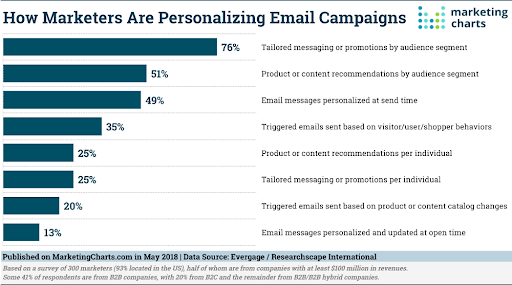
Email personalization has become essential in lead generation and the establishing of campaigns. As much as 76% of marketers look to tailor their messaging or promotions based on audience segments. But how can they efficiently find the right audiences to market to? And how do they know what type of content certain types of leads are most responsive to? Holistic analytics can help to deliver many advantages to your email marketing campaigns, such as:
- Better and more personalized customer experience models, offering a seamless journey from a recipient’s inbox onto your website’s pages.
- Increased value gained from conversions through removing the barriers to purchase to achieve small uplifts.
- Growing a more extensive customer base through reaching and converting your website visitors more effectively.
- Through strategic, holistic email testing, you can be better positioned to solve problems and identify opportunities in future marketing.
- Position your email strategy at the heart of your marketing efforts to optimize the value of holistic marketing insights.
The impact of holistic analytics is far-reaching, especially for conducting off-site campaigns like email marketing. Let’s take a look at four key data insights that holistic analytics can help you to analyze:
1. Metrics to Establish Subscriber Relationships
Email marketing is a predominantly give-and-take channel. This means that you need to make your subscribers feel great to see great results. Establishing solid relationships with your subscribers can show that you offer a good level of value to your mailing list.
In the shorter term, email metrics like open rates and click-through rates can indicate positive reactions to your content. On the other hand, unsubscribes and complaints indicate adverse reactions among your mailing list.
However, more holistic approaches seek to measure the prolonged effects of individual campaigns and how they affect your continuing relationships. There are many factors to consider when looking at the longer-term impact of your email marketing performance, and holistic analytics can help to identify issues and opportunities where other insights may not be possible. Factors such as those listed below can all be vital in creating subscriber relationships:
- Your active list volume
- Growth and churn rate within your mailing lists
- Inactivity rates
- Length of subscriber inactivity
- Open reach percentage of subscribers who have opened at least one email over a predesignated amount of time
- Click reach percentage of subscribers who have clicked through on at least one email over a predesignated amount of time.
- Tracking metrics based on your acquisition sources
One robust metric to follow is the acquisition source for subscribers. In many cases, a larger portion of the negative reactions you will receive will come from one or two acquisition sources. Some examples are email list rental or co-registration, which are among the five most problematic sources for new leads.
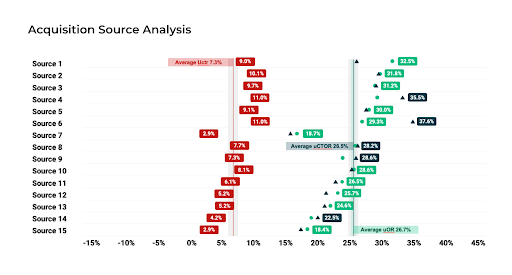
Above, we can see how Trendline Interactive uses a straightforward and powerful visualization to show how different acquisition sources can offer significantly different performance levels in your email campaigns. A valuable metric to keep hold of when such rates can make a massive difference to your bottom line.
Utilizing holistic analytics to gain a better understanding of your website performance based on your acquisition source can help to reveal emerging problems. Allowing you to analyse whether your approach may need a revamp or revision.
2. Intelligence-Driven Conversion Funnels
We use email marketing mainly as a cost-effective way of targeting larger audiences of customers with messaging, branding and promotions. Marketers, particularly those based around retail or CPG industries, can rely on email campaigns to deliver greater levels of engagement, brand loyalty and conversions.
Previously marketers have chiefly focused on click and open rates and metrics like deliverability and unsubscribe rates. However, it’s becoming clear that they’re lacking in delivering the whole picture when it comes to analyzing campaign performance.
To take advantage of email marketing campaigns, marketers are increasingly moving towards more holistic measurements and their broader impact on conversion funnels using email marketing dashboards. These overviews don’t simply track key metrics; they also tap into web analytics and sales data to help to measure business impact and customer journey experience.
Equipped with a holistic understanding of past and ongoing campaigns, marketers can optimize for business outcomes while campaigns are still taking shape. At the same time, they’re generating more manageable results and gaining greater insights into future campaign planning.
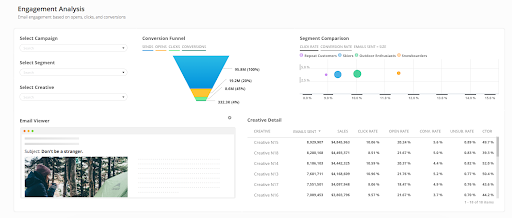
As we can see from the dashboard above from Datorama, marketers can tap into a wealth of information and visualization regarding customer engagement and segmentation. These insights are just part of a larger email marketing overview that can offer qualitative and quantitative insights into campaigns.
3. Acting on Customer Experience Insights
Customer experience is now so heavily part of the digital marketing ecosystem that the journeys your email recipients take from their inboxes can be every bit as important as the wording of your message itself.
User journeys need to align with the level of experience consumers would expect if they entered a physical store. The days of sending generic mass cold emails and hard selling are long gone, and you need to demonstrate value and personalize from the offset.
In the wake of the pandemic, we’ve seen that customer experience has become more critical than ever. Just a matter of months into the pandemic, McKinsey research noted that “indeed, recent data show that we have vaulted five years forward in consumer and business digital adoption in a matter of around eight weeks.”
Although customer experience marketing can be a broad topic, it revolves around putting your customer first throughout their journey. As a big push channel, email marketing can often act as the very beginning of your customer’s journey with you.
Kathy Pay, CEO of Email Holistic Marketing, believes that she’s identified three key pillars to customer experience marketing: helpfulness, customer-centricity, and personalization.
“It’s about considering them and their needs and doing what is needed to make their journey as seamless and as easy as possible – not just in removing barriers and simplifying processes, but also can be brought about with your brand’s tone of voice, your messaging and the helpful programmes you send to them,” Pay explains.
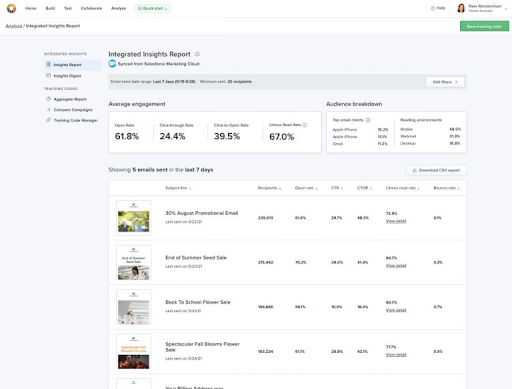
Holistic data like that provided by Litmus can help to show how your audience can be broken down by their receptiveness to specific campaigns. This enables you to craft the particular content that can encourage them to take their first steps on their journey with you.
4. Campaigns Based on Website Interactions
One key aspect of attaining the bigger picture through holistic insights is determining who your customers are and behave. Email campaigns can be better optimized if you know how they’re likely to be browsing and what device they’re using to view their messages.
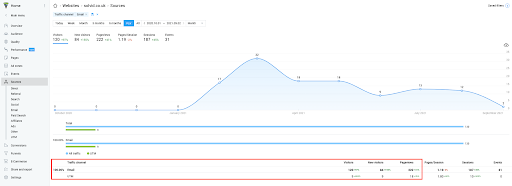
Data analytics platforms like Google Analytics and Finteza can contribute to the holistic approach to email marketing by providing a clearer picture of the audience you have. Using analytics platforms, you’re able to identify how much traffic is generated by email, and most importantly, how that traffic interacts with your website.
Via insights provided when email recipients click through to your landing pages, you can learn precisely the device they’re using and even the screen resolution they have. This helps you design emails with the knowledge of what they can and cannot view as soon as they open the message – a clear advantage in attracting more clicks.
Fundamentally, holistic analytics can modernize email campaigns and make them far more personalized and engaging than ever before. Although in the age of digital marketing, emails are certainly long in the tooth, emerging technology and the power of modern analytics have regenerated campaigns to reach the right audience and inspire them to convert on-site. It’s for this reason that holistic analytics has added a new dimension to email marketing.



Comments
0 commentsNo comments yet